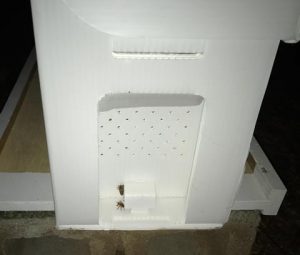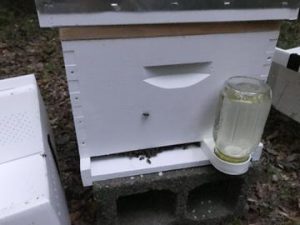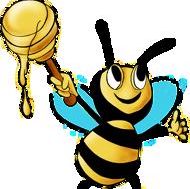When people first learn about Romick’s Bee Farm they usually ask what made me decide to become a beekeeper. My answer is normally, “I’m not really sure.” I was looking for something to do that would get me off the chair in front of the TV that at the same time wouldn’t interfere with time with Teri, my wife, at least not too much.

I still don’t remember exactly what it was that got me started researching honey bees. But the more I read the more I thought it was just what I was looking for. It was something I could do in my own yard (we have a little over 3 acres in northwest Coweta County, Georgia) that wouldn’t require hours and hours of time or lots of money to get started (though the initial outlay was a bit more than I anticipated).
Plus there was the potential to recoup a little of the financial investment through honey sales, not mention the honey I’d be able to eat myself. And the plight of the honey bees has been well documented in the past few years. These industrious insects have been having a very difficult time. They’re threatened by pesticides, Varroa mites (also known as Varroa destructor), other predators, colony collapse disorder, loss of natural environment and other stressors.
Honey bees pollinate about one-third of the food we eat and are vital to not only the environment but the economy. Every year thousands of hives, that’s millions of honey bees, are transported to California to pollinate the almond crop. Without honey bees there would be no almonds, or lots of other vegetables and fruits we love so much.

Once I decided to become a beekeeper I found a local beekeeper who had just opened a store and sold bees as well. I purchased two nucs (nucleus or starter colonies that have five frames each with a mated queen, lots of worker bees, brood and some honey and pollen) some boxes (the actual hives with frames where the bees live and work), a beekeeper suit, gloves, a smoker and some other tools and got started.
This was in the middle of June, after most of the plants that produce the nectar bees harvest to make honey had stopped blooming. So I fed them sugar syrup (a 50/50 mix of sugar and water) through the summer and autumn. Once it got too cold for the liquid I made a fondant, kind of like a hard candy mixture, to ensure the honey bees had enough food to get through the winter.
In March one of the hives (or colonies, the terms mean about the same) had built up enough that I split it. That’s the process of taking the queen and about half of the worker bees from a hive and starting a colony with them. I made sure there were freshly laid eggs and worker bees left in the original hive. Honey bees can create a new queen by feeding one of the eggs royal jelly exclusively.

Splitting a colony is an easy way to increase the number of colonies in the bee yard without needing to purchase more bees. It also helps discourage the honey bees from swarming, since the split is an artificial swarm. Honey bees naturally swarm to produce new colonies. The queen and up to two-thirds of the workers will leave a hive and find a new home once the existing hive becomes too crowded.
So with the split I had three healthy colonies all set for the spring nectar flow. In late June of 2019 I got our first honey harvest, about 30 pounds. Not much, but there were still quite a few frames in each colony that contained nectar that the honey bees had not finished processing into honey, so there may still be more honey to harvest this year.
Here’s a video of the first 24 hours of Romick’s Bee Farm, from the placement of the nucs to transferring the frames and honey bees into deep boxes.
